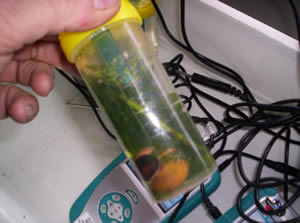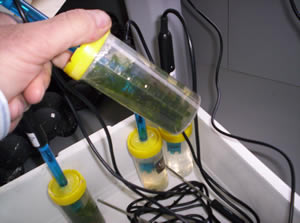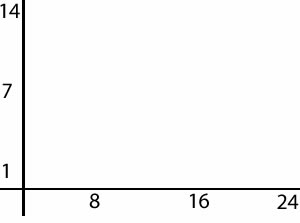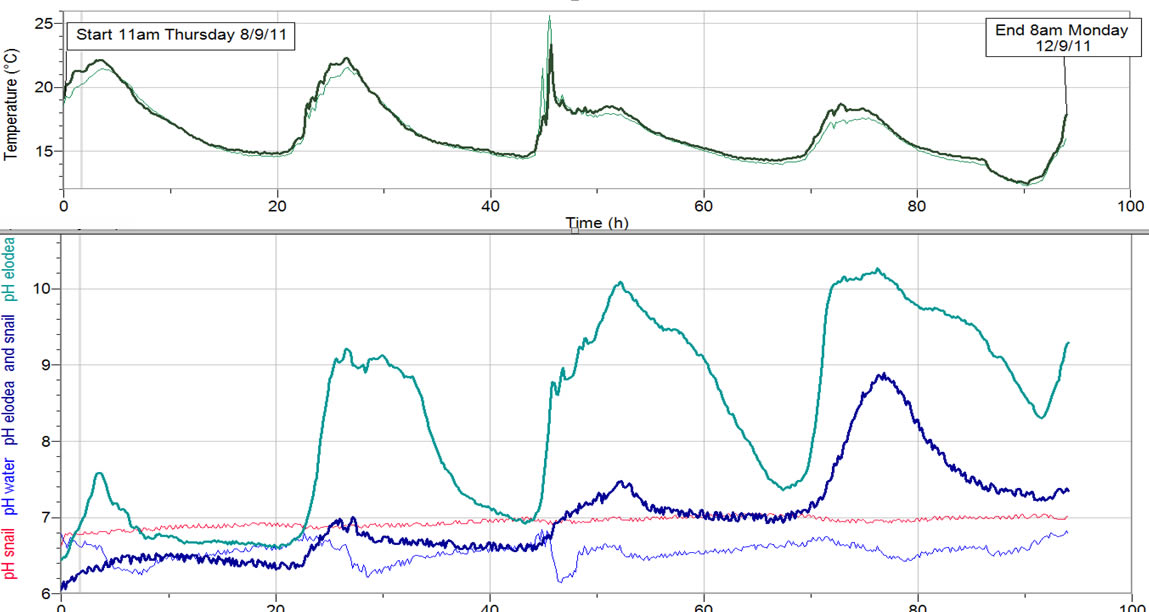Living together

An ecosystem is the collection of all organisms in a geographic area along with the things with which they interact. Two types of ecosystems exist, aquatic and terrestrial. In this activity we will investigate the interaction between plant (elodea) and animal (snail) in a sealed environment.
The following sealed jars were prepared and placed on a window ledge where they were exposed to natural daylight and heat. Temperature sensors measured the temperature over the 24 hour period.


Snail on its own
A forth jar had pure water. All four jars had water filled to the top and probes to measure pH of the water placed in them as shown. Results were collected over three days.

Carbon dioxide is the product of respiration. Plants and animals respire, burning glucose and oxygen to derive energy for life sustaining functions.
C6H12O6 + 6O2 => 6CO2 + 6H2O + Energy
Carbon dioxide is an acidic gas. When it dissolves in water it produces a weak acid called carbonic acid according to the equation below.
CO2 + H2O <=> H2CO3
In daylight, plants not only respire but photosynthesise as well. Photosynthesis uses carbon dioxide and water to produce glucose. In actual fact it is the reverse of the respiration reaction.
6CO2 + 6H2O + Energy => C6H12O6 + 6O2






Below are the results of real investigation. The temperature increase is due to light passing through the window onto the jars. So peak temperature is achieved during the day, at about 2 pm.
1) Look at the pH trend of the jar containing just the elodea (green).
a) The pH oscillates. Explain why?
b) After each cycle the pH in the elodea jar (green) gets higher. Suggest a possible hypothesis and describe an investigation to test your hypothesis.
2) The pH in the snail only jar increases steadily at a very slow rate compared to the other jars which fluctuate with sunlight and or temperature. Why?
3) The pH of water (light blue) fluctuates with temperature. This jar contained pure water and nothing else. Suggest why the pH fluctuates with light or temperature. Is there are relationship between temperature and pH in pure water? Explain
4) The pH of the elodea and snail jar (dark blue) looks like it is following the same pattern as the elodea jar. However the fluctuations are not as great in the elodea and snail jar as they are in the elodea jar. Explain why.
